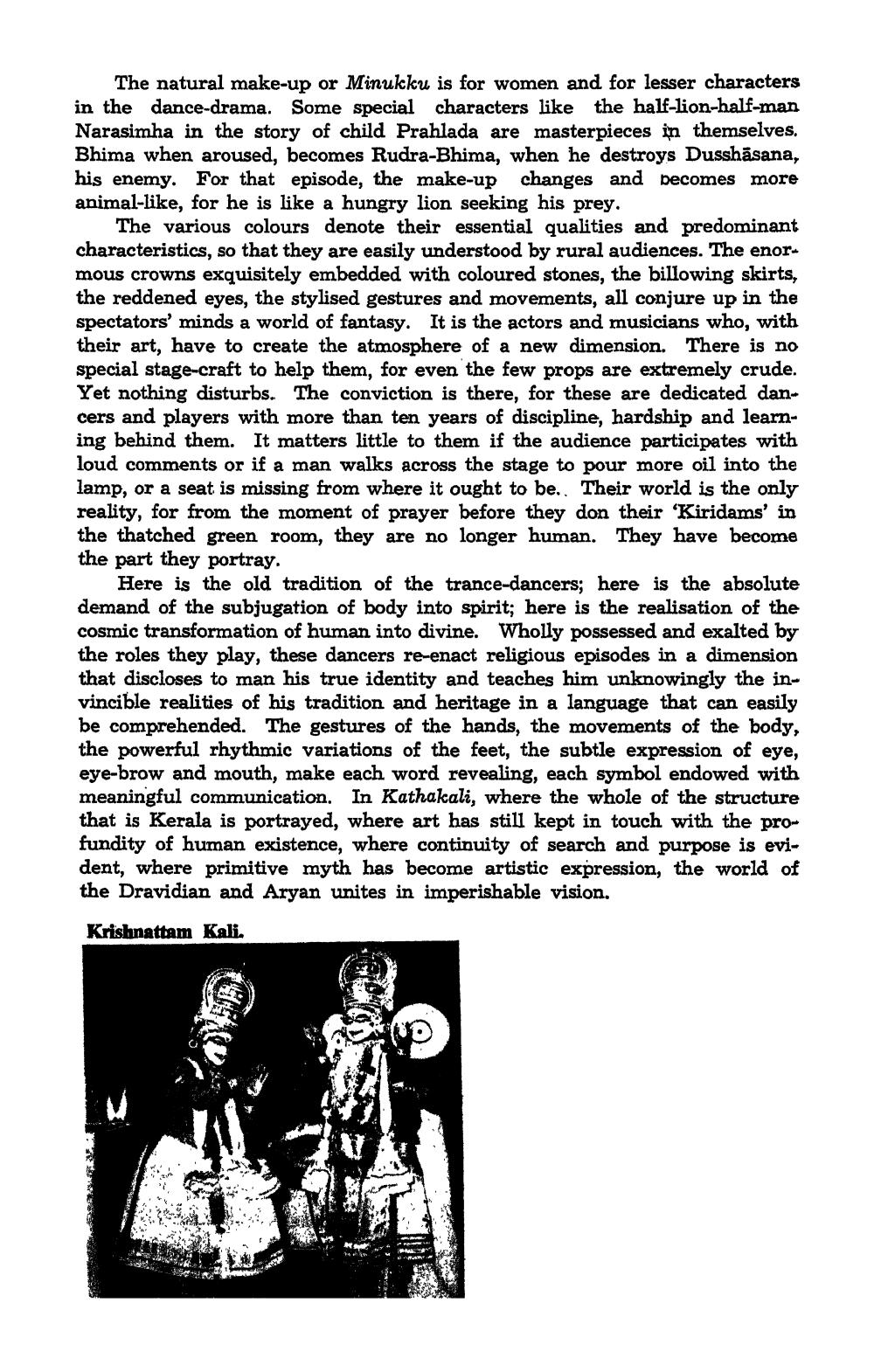________________
The natural make-up or Minukku is for women and for lesser characters in the dance-drama. Some special characters like the half-lion-half-man Narasimha in the story of child Prahlada are masterpieces in themselves. Bhima when aroused, becomes Rudra-Bhima, when he destroys Dusshāsana, his enemy. For that episode, the make-up changes and becomes more animal-like, for he is like a hungry lion seeking his prey.
The various colours denote their essential qualities and predominant characteristics, so that they are easily understood by rural audiences. The enormous crowns exquisitely embedded with coloured stones, the billowing skirts, the reddened eyes, the stylised gestures and movements, all conjure up in the spectators' minds a world of fantasy. It is the actors and musicians who, with their art, have to create the atmosphere of a new dimension. There is no special stage-craft to help them, for even the few props are extremely crude. Yet nothing disturbs. The conviction is there, for these are dedicated dancers and players with more than ten years of discipline, hardship and learning behind them. It matters little to them if the audience participates with loud comments or if a man walks across the stage to pour more oil into the lamp, or a seat is missing from where it ought to be. Their world is the only reality, for from the moment of prayer before they don their 'Kiridams' in the thatched green room, they are no longer human. They have become the part they portray.
Here is the old tradition of the trance-dancers; here is the absolute demand of the subjugation of body into spirit; here is the realisation of the cosmic transformation of human into divine. Wholly possessed and exalted by the roles they play, these dancers re-enact religious episodes in a dimension that discloses to man his true identity and teaches him unknowingly the invincible realities of his tradition and heritage in a language that can easily be comprehended. The gestures of the hands, the movements of the body, the powerful rhythmic variations of the feet, the subtle expression of eye, eye-brow and mouth, make each word revealing, each symbol endowed with meaningful communication. In Kathakali, where the whole of the structure that is Kerala is portrayed, where art has still kept in touch with the profundity of human existence, where continuity of search and purpose is evident, where primitive myth has become artistic expression, the world of the Dravidian and Aryan unites in imperishable vision.
Krishnattam Kali.
P
4




